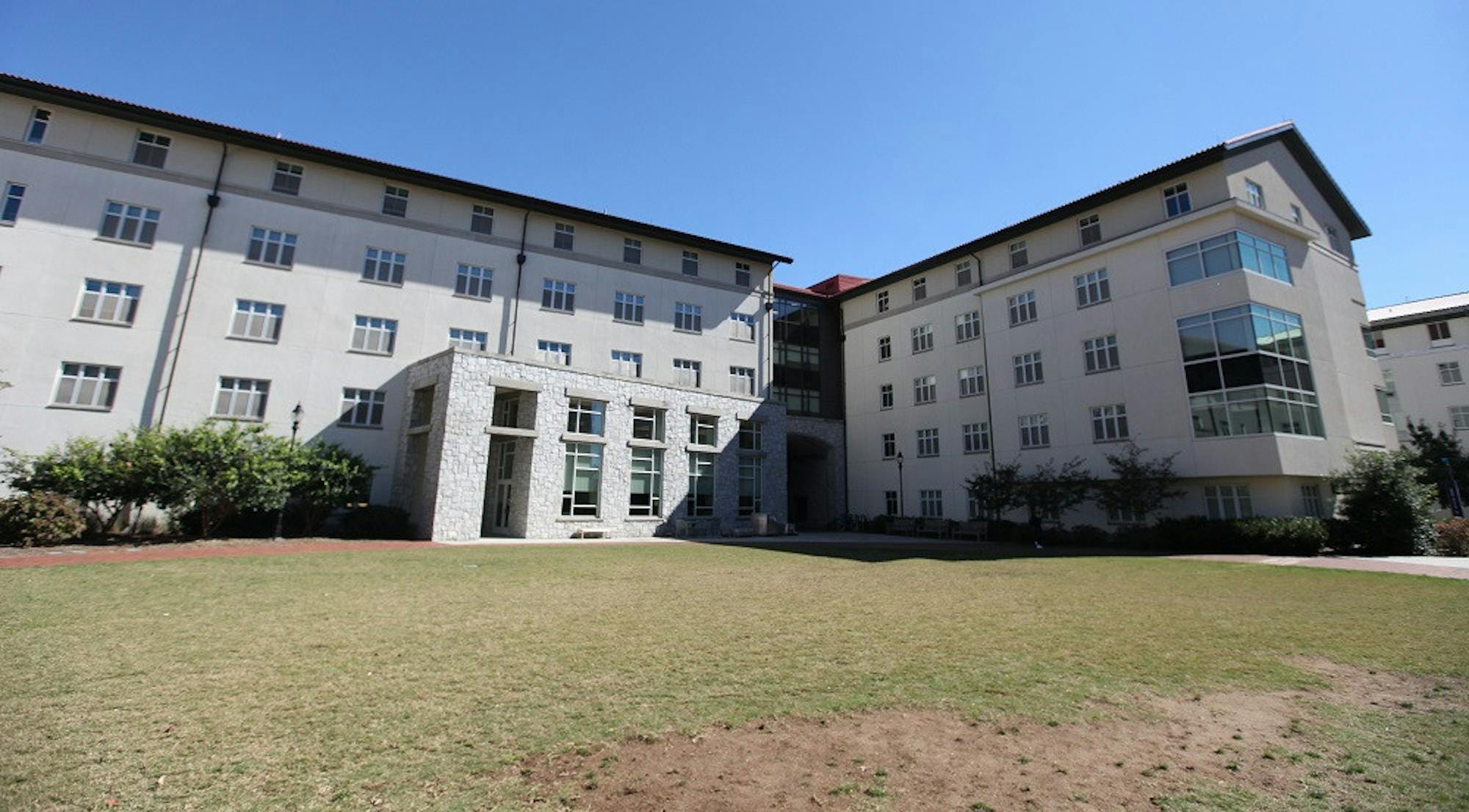It’s late night, early morning. The 2019 Freshman Semi-Formal just ended, and hungry first-years are scurrying back to Longstreet-Means Hall for breakfast food prepared by Residence Life (ResLife) staff. Some 200 residents attend, including students from other dorms trying to get food.
Resident Advisor (RA) Matthew Nails (22C), who was a Sophomore Advisor (SA) in Longstreet-Means Hall last year, reflected fondly on this experience. This semester, he’s seen a huge lack of attendance at his dorm programs, the opposite issue from events in previous years, like the post-Semi-Formal breakfast.
“It’s sad because we hear people saying that they’re struggling to find a place to belong,” Nails said. “We try to do events, but a lot of time people come to events because their friends are going and it’s something they can do together. It’s a lot harder when you don’t have a roommate to nudge you and say, ‘Hey, let’s go get this.’”

This semester, numerous events planned by RAs and SAs are met with little to no residents showing. The lack of attendance is partially the result of measures aimed at reducing the risk of COVID-19 transmission, such as fewer residents on campus and virtual events.
These measures have helped prevent a mass outbreak of COVID-19 on campus. As of Oct. 24, the COVID-19 dashboard reported 44 COVID-19 cases on campus.
Nails noted that ResLife is committed to preventing the spread of COVID-19. Therefore, there is a strong focus on upholding safety measures — even at the expense of community building — to ensure dorm programs don’t jeopardize students’ opportunity to remain on campus.
Although there are fewer residents showing up at events this semester, RA Sean Woo (22C) thinks that proportionally the same number of students are coming to events, but there are just fewer first-years on campus this semester.
SA Sergio Eraso (23C) noted that the virtual nature of these events pose lessen the incentive to attend programs this semester.
“It’s very difficult to come up with innovative programs that haven't been done before because everything has to revolve around virtual programming,” Eraso said. “It’s very difficult to come up with new ideas that the residents will actually want to participate in.”
Woo attributed the lack of resident participation in virtual programs to Zoom fatigue. With classes being online, residents are hopping off one Zoom call just to head onto another.
However, Nails explained that some virtual events are a necessity because ResLife is trying to be considerate to virtual residents and want to ensure that first-years off campus still have opportunities to interact with on-campus residents.
Ultimately, the difficulties in program planning and formatting has contributed to limited participation in dorm activities. Many RAs and SAs have planned events this semester in which no residents attended.
RA Haley Grissett (22C), another RA and an SA prepared a program in which residents could pick up a cup of coffee and learn about fair trade and direct trade coffee, but no residents attended the event.
“It ended up only being ResLife people who just came to support us,” Grissett chuckled.
Likewise, Eraso organized a “Shakes and Charades” program where residents were supposed to pick up a milkshake and then play charades. However, after getting their shake, most residents decided to skip on the charades component.
“We made a ton of milkshakes for the residents and spent a good time in the kitchen,” Eraso said. “A bunch of people came to take the milkshakes, but we were supposed to play charades afterwards but then there were only like five of us, including staff members.”
Nails worries that the lack of residents showing up at dorm events is coming at the expense of building a dorm community.
“There’s a push and pull effect,” Nails explained. “Last year we weren’t focused on not spreading diseases because that wasn’t our reality, so we were able to push the community aspect. Now it’s the opposite so we’re losing a little bit of the community. It’s hard to see.”
Citing low participation, Nails contemplated, “How do we get more people at events? Because right now, the numbers aren’t looking good.”
These concerns have been raised at ResLife meetings with a dorm’s respective complex director. According to Nails, his supervisor requested more floor-specific events. The RAs and SAs on his floor helped coordinate a grab-and-go event where the floor’s residents could pick up masks and prepackaged cookies placed on a table.
Although it’s challenging to build a community through grab-and-go programs, Nails said this event received traction from his residents because of the quick and convenient nature of passive events.
To try to get more residents to attend her events, Grissett circulates a feedback form, in which residents can share program ideas they would be interested in. Although no students have used the form, Grissett indicated some residents have gone up to her to share activities they think the floor would enjoy.
In response to not seeing as many residents at dorm programs in recent weeks compared to the start of the semester, Woo believes her hall’s early programs helped her residents make friends.
“We see them hanging out in lounges,” Woo said. “Just because people don’t come to our program doesn’t mean that they don’t have friends and aren’t hanging out with people.”





